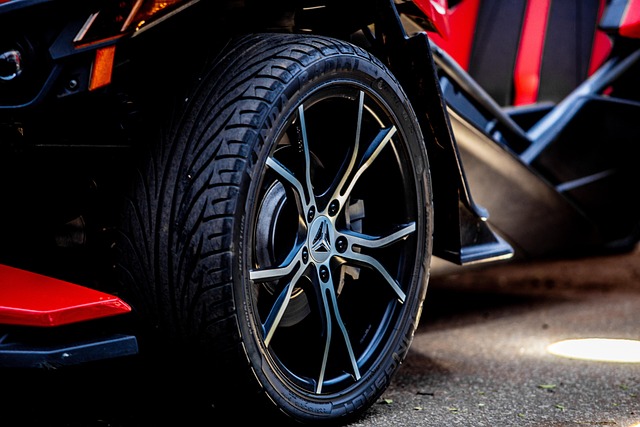Looking to register your car in California? This comprehensive guide will walk you through the process, ensuring a smooth experience. First, understand the eligibility requirements for car registration in California. Next, gather necessary documents for DMV VIN verification, including proof of ownership and insurance. Visit a local DMV office to complete the application. Pass inspection and pay registration fees. Finally, maintain your vehicle’s registration and provide up-to-date proof of insurance. Follow these steps, and you’ll be legally registered in no time with a successfully completed dmv vin verification.
- Understand Eligibility Requirements for Car Registration in California
- Gather Necessary Documents for DMV Vin Verification
- Complete the Application Process at a California DMV Office
- Pass Inspection and Pay Registration Fees
- Maintain Your Vehicle's Registration and Provide Proof of Insurance
Understand Eligibility Requirements for Car Registration in California

Before you begin the registration process, it’s crucial to understand the eligibility requirements for car registration in California. Your vehicle must meet certain standards to be registered within the state. One key step is ensuring a successful DMV VIN verification. This involves checking that your car’s Vehicle Identification Number (VIN) is valid and matches the information on record with the Department of Motor Vehicles (DMV). A proper VIN inspection ensures your vehicle’s history is accurately represented, which is vital for safety and legal compliance.
Additionally, to streamline the registration process, consider using a mobile vin inspection service. These services offer convenient, on-demand verifications by professional mobile vin checkers who can visit you at your location. This option is particularly useful if you have a unique or classic vehicle that may require specialized care during the VIN inspection process.
Gather Necessary Documents for DMV Vin Verification

Before heading to the DMV for vehicle registration, ensure you have all the necessary documents required for a successful dmv vin verification. This process is crucial to establishing the ownership and authenticity of your vehicle. Gather the following items:
1. The original title or certificate of ownership signed by the seller.
2. A valid driver’s license or state-issued ID card.
3. Proof of insurance that meets California’s minimum requirements.
4. A completed Vehicle Registration Application (Form DVF 605).
5. If transferring a registration, include the previous owner’s signature and their DMV-issued registration card. For a vin inspection, having these documents readily available will expedite the process. Alternatively, consider using a mobile vin verifier to streamline the verification step, especially if you’re short on time or not near a DMV office.
Complete the Application Process at a California DMV Office

To complete the registration process for your vehicle in California, you’ll need to visit a local DMV office. Bring all necessary documents and fees to streamline the procedure. Start by filling out Form DV-140, which is the Application for Title and Registration. This form requires personal information about the owner and the vehicle’s details, including its make, model, year, and unique Vehicle Identification Number (VIN). Once your application is ready, a DMV representative will guide you through the process.
One crucial step during this visit involves the VIN verification process. The California DMV conducts a thorough check on the vehicle’s history using the VIN to ensure it meets safety standards. This is typically done by comparing the provided VIN against state and national databases. If your car passes this inspection, which can often be facilitated by a mobile vin verification service or a local mechanic with appropriate tools, you’ll receive your registration and title.
Pass Inspection and Pay Registration Fees

After ensuring your vehicle meets all safety standards and environmental requirements, it’s time to pass the DMV Vin verification process. This involves a comprehensive inspection that checks your car’s emissions, lights, brakes, tires, and other critical components. A mobile vin verifier or mobile vin inspection service can facilitate this by providing on-site testing, saving you the hassle of visiting a DMV facility.
To officially register your car in California, you’ll need to pay the necessary registration fees. These fees vary based on factors like your vehicle’s type and age. The process is streamlined with a mobile vin verification service, as they can assist in calculating and collecting these fees, making the entire registration procedure more convenient and efficient.
Maintain Your Vehicle's Registration and Provide Proof of Insurance

After successfully registering your vehicle with the DMV, it’s crucial to maintain your vehicle’s registration and have proof of insurance readily available at all times. This involves timely renewal of your registration to avoid penalties and fines. In California, this typically means renewing your registration every year or when required by the Department of Motor Vehicles (DMV).
Additionally, you must provide proof of valid auto insurance coverage whenever requested, such as during traffic stops or when involved in an accident. This can be facilitated through a mobile vin verifier, which enables quick and easy digital verification of your vehicle’s identification number (VIN) and insurance status. A VIN inspection ensures that your policy matches the specific make, model, and year of your car, demonstrating compliance with California’s motor vehicle laws.
Registering a car in California involves understanding eligibility requirements, gathering essential documents for DMV VIN verification, completing an application at a local DMV office, passing inspection, and paying fees. Once registered, it’s crucial to maintain your vehicle’s registration and provide proof of insurance. By following these steps, you’ll ensure your vehicle complies with state regulations, making the roads safer for all California drivers.
